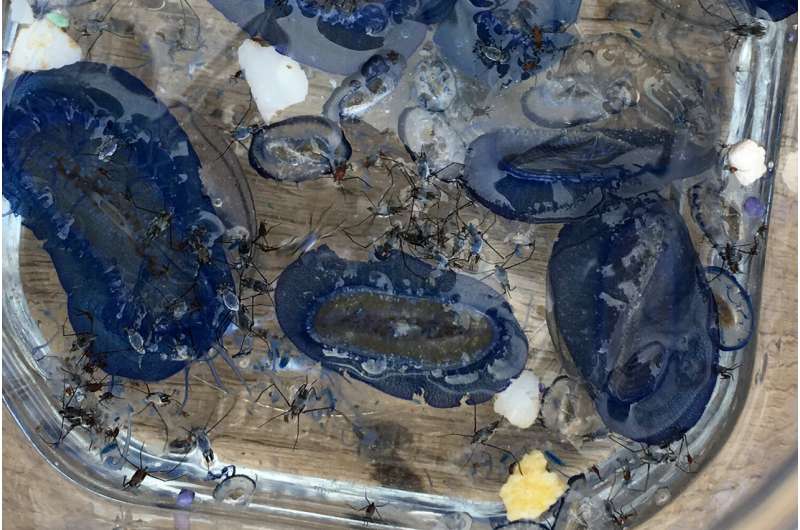Plastic pollution in the world’s oceans has emerged as a pressing environmental challenge, with far-reaching implications for marine ecosystems and human well-being. Despite growing awareness of this issue, a recent study conducted by researchers from the Helmholtz Centre for Environmental Research UFZ and the Alfred Wegener Institute Helmholtz Centre for Polar and Marine Research AWI has revealed alarming findings: large accumulations of plastic waste and microplastics are not confined to well-known garbage patches but are distributed extensively across remote marine areas. This study sheds new light on the pervasive nature of plastic pollution and underscores the urgent need for global action to curb plastic emissions.
The Scope of the Problem: Plastic pollution poses a significant threat to marine life and ecosystems, with profound ecological and socio-economic consequences. Every year, millions of tons of plastic enter the ocean through various pathways, including rivers, wind dispersion, shipping, and fishing activities. Once in the marine environment, plastic undergoes weathering and fragmentation, breaking down into smaller particles known as microplastics. These particles can be ingested by marine animals, leading to adverse health effects and disrupting marine food webs.
The Study: In an effort to assess the distribution of plastics in the oceans and identify areas of particular concern, researchers conducted a comprehensive study using data collected during a five-week expedition in the North Pacific Ocean. Sampling stations were strategically selected based on predictive modeling to capture a range of plastic loads, including well-researched areas like the Great Pacific Garbage Patch and remote marine reserves. Two methods were employed to quantify the amount of plastic in surface water: litter surveys and neuston net towings.
Findings: The study revealed that plastic pollution is widespread and pervasive, with significant quantities of plastic waste and microplastics detected at all sampling stations. Surprisingly, remote marine protected areas, such as the Papahānaumokuākea Marine National Monument northwest of Hawaii, exhibited levels of plastic pollution comparable to those found in heavily impacted regions like the Great Pacific Garbage Patch. These findings challenge previous assumptions about the distribution of plastic pollution and highlight the urgent need for concerted action to address this global issue.
Implications: The presence of large accumulations of plastic waste and microplastics in remote marine areas underscores the far-reaching impact of plastic pollution on marine ecosystems. Microplastics, in particular, pose a significant threat due to their widespread distribution and potential for ingestion by marine organisms. The study’s findings emphasize the interconnectedness of marine environments and the need for coordinated efforts to reduce plastic emissions and mitigate the ecological damage caused by plastic pollution.
Call to Action: In light of these findings, the researchers advocate for immediate action to curb plastic emissions and protect marine ecosystems. They call for the adoption of a legally binding global Plastics Treaty by UN member states to address plastic pollution comprehensively. Key measures include reducing plastic production, promoting reuse systems, and improving the chemical composition of plastic products to facilitate safer reuse and higher recycling rates. As independent scientists, the researchers stand ready to advise policymakers and advocate for effective solutions to combat plastic pollution and safeguard the health of our oceans.
The study’s findings serve as a stark reminder of the pervasive nature of plastic pollution in our oceans and the urgent need for decisive action to address this global crisis. By revealing the widespread distribution of plastic waste and microplastics in remote marine areas, the research highlights the interconnectedness of marine ecosystems and the profound impact of plastic pollution on marine life and biodiversity. With the adoption of effective measures and international cooperation, we can work towards a future where our oceans are free from the scourge of plastic pollution, ensuring the health and vitality of marine ecosystems for generations to come.
